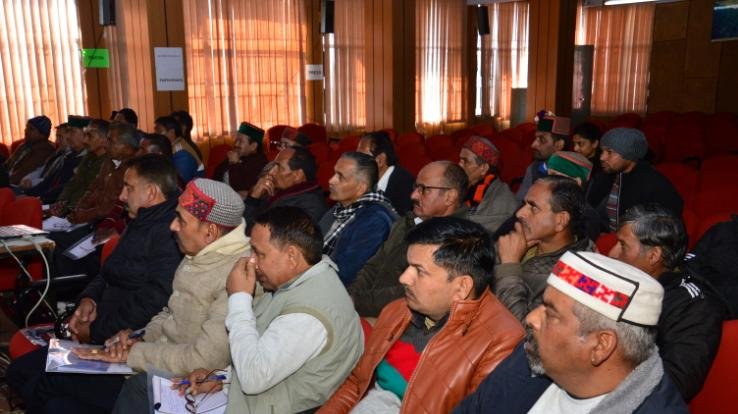Need to ensure health of the forests: Dr Kaushal

There is a need to ensure that the health of the forests is maintained by the adoption of scientific techniques and plantation of high yielding trees. Dr Parvinder Kaushal, Vice-Chancellor of Dr YS Parmar University of Horticulture and Forestry (UHF) Nauni stated this during the inaugural session of the one-day training on borehole method of Oleoresin tapping held at the university. Officials and field staff of the HP State Forest Development Corporation attended the training. The scientists of the Forest Products Department of the university have developed the method.
Speaking at the occasion, Dr Kaushal said that borehole method not only required less labour but the adoption of the new technique will also help to realize the twin motives of resin quality and its quantity along with ensuring the good health of the trees which was of prime importance for the future of the turpentine industry. He was of the view that the scientists and the officials of the Forest department must fix the upper limit of the number of bores, which can be made on each tree to ensure proper plant health. He added that the department should ensure that high yielder trees are planted in the future.
Dr Kaushal said that the rosin and turpentine oil obtained from borehole method is of very good quality, which can fetch higher prices in the market. In addition to tackling the problems of tree health, labour requirements and costs for borehole tapping are significantly lower than conventional methods. The borehole wounds cause little damage to the tree bark and therefore, there is no damage to the merchantable part of the tree. This technique can prove to be very effective in the conservation and management of pine resources in India and if implemented, the method can prove to be a major boon for the resin-based industry of the state. He also added that the technique can also be used to tap Kail trees for good quality resin.
Dr Kulwant Rai Sharma, Dean, College of Forestry, who has worked for several years on developing and standardizing this method gave a detailed presentation and practical exposure on the technique to the participants. The borehole method involves drilling small holes (1 inch wide and 4 inches deep) with the help of simple tools into the tree to open its resin ducts. The holes are drilled with a slight slope towards the opening, so that oleoresin drains freely. Multiple boreholes can be made at least 15cm away from each other. Spouts are tightly fitted into the opening with polythene bags attached to it with the help of tie for resin collection. KK Kataik, Director (South), Dr Meenu Sood, Head, Department of Forest Products and other scientists also attended the programme.
This was the fourth training on the technique organized by the university. In November last year, Forest Minister Sh. Gobind Singh Thakur had chaired the inaugural training programme and also visited the experimental block to see the technique. The Forest Corporation had also decided to take up the technique in every directorate to assess the results of the method.


